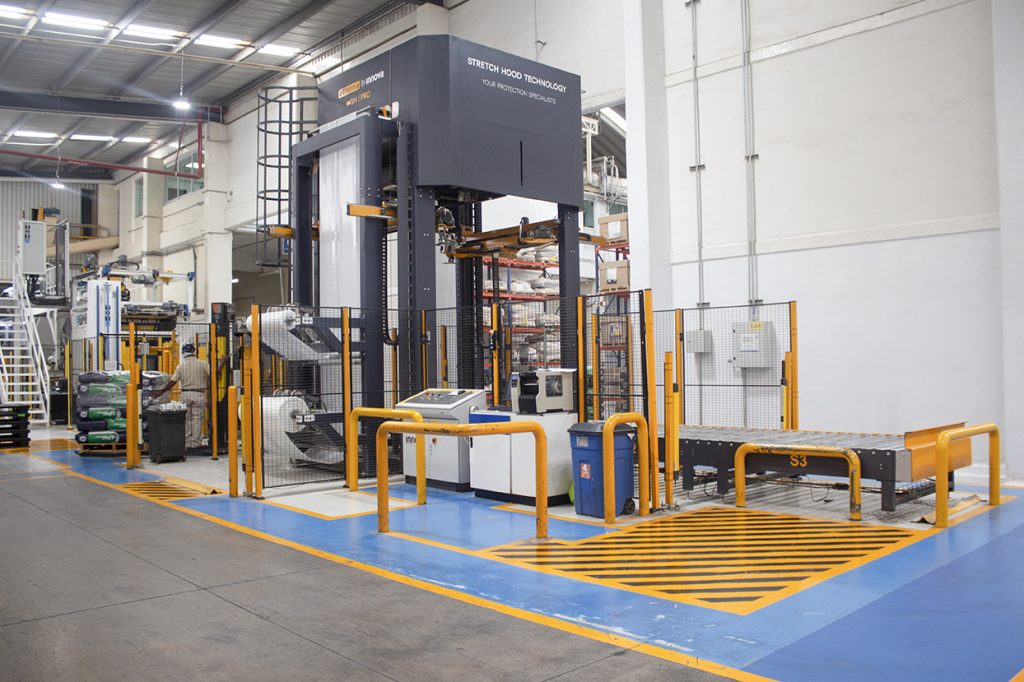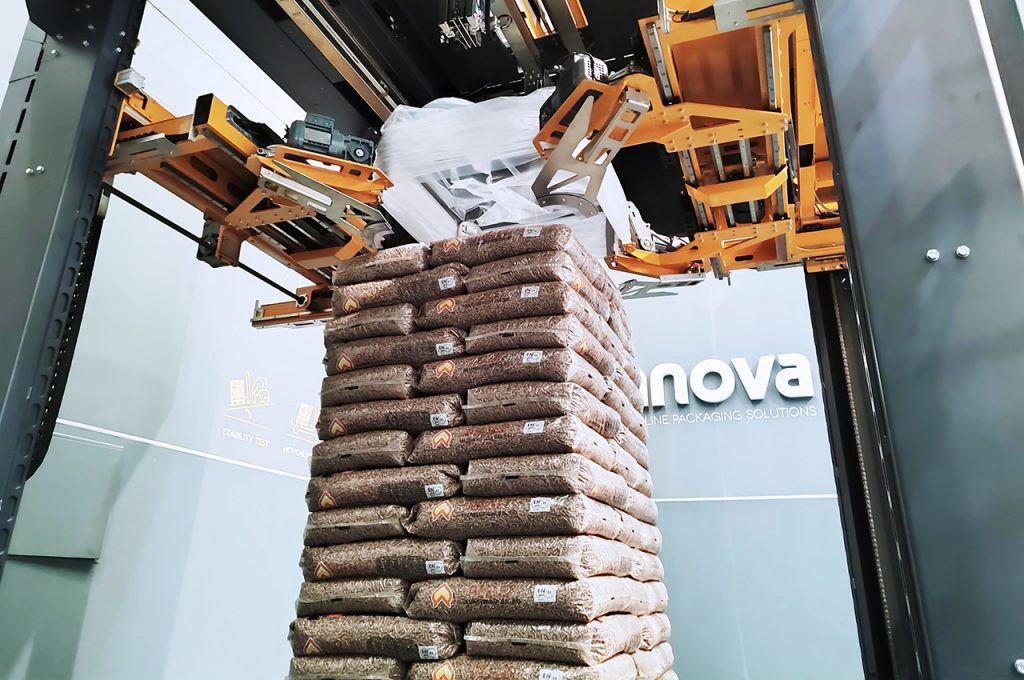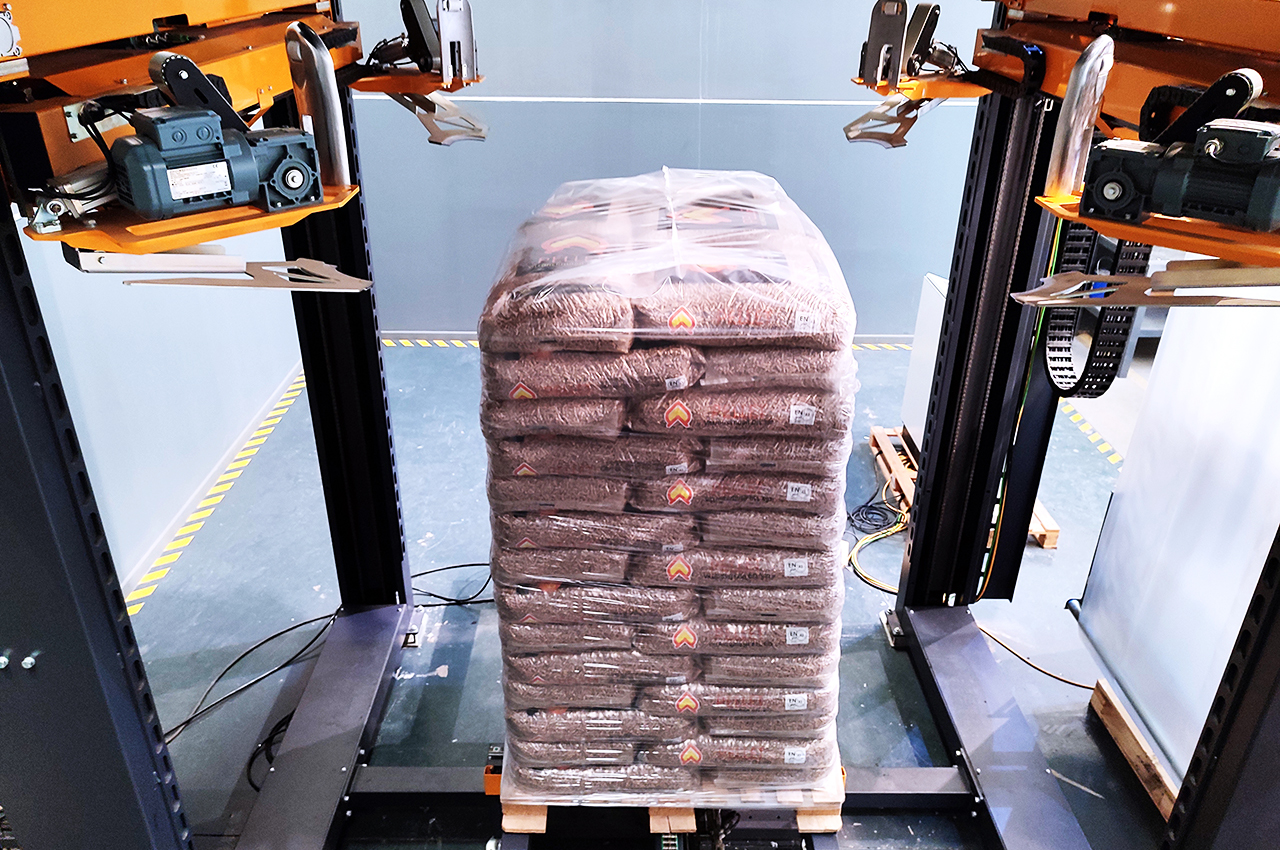How Stretch Hood helps comply with pellet freight regulations
How to secure the loading of fuel goods? How can we improve the transport of pellets by road? These are some of the questions facing pellet and biofuel manufacturers. Indeed, the biofuel and pellet industry has grown considerably in recent years, but so have the regulations and logistics requirements that this sector must meet. What transport regulations affect the pellet sector?
In today’s post, we will look at how a cargo packaging system such as the Stretch Hood can help you comply with transport regulations, specifically for combustible commodities such as pellets and biofuel products. We will also look at other regulations and requirements that affect the industry and how packaging systems help meet these regulations.
What transport regulations affect the pellet sector?
There are numerous laws and regulations to consider when evaluating pellet and biofuel transportation, and we have to keep them in mind during the transport, logistics, and handling of the products.
- In the case of Europe: “The directive EUMOS 40509 / Directive UE2014, requires each load to be tested and certified for stability. This decree determines a series of technical regulations that must be incorporated in the securing and stowage of truck cargo. The great novelty of this regulation was that the manufacturer or shipper of the goods became responsible and must be sanctioned in the case of incorrect packing and lashing for transport”.
- For the U.S.: The FMCSA published the North American Cargo Securement Standard, which establishes procedures for securing loads during transit on highways in the U.S., Canada, and Mexico. “Cargo securement systems on or within vehicles should prevent their cargo from leaking or spilling, blowing off or falling from or through the vehicle, or becoming dislodged from its storage location. Cargo should not be allowed to shift within an enclosed vehicle or adversely affect the vehicle’s stability”.
Specifically, these regulations contain the following aspects to be taken into account:
- Requirements for vehicles and equipment.
- Documentation and labeling
- Route planning
- Emergencies and risk management
- Safety conditions for loading, unloading and transportation
- Personnel training
That is why a good packaging system that provides support, protection, and safety allows to save costs, minimize losses due to transport problems, and deliver the product in the best conditions and times. There are many packaging systems options, but in this case, we recommend the Stretch Hood.
How does the Stretch Hood system help compliance with this and other regulations?
We saw the transport regulations that affect the biomfuel sector, let’s take a look at the advantages of packaging systems to comply with them, with the specific case of the Stretch Hood.
The Stretch Hood system is one of the most widely used packaging solutions in the pellet sector in recent years due to its numerous advantages in terms of protection, savings in consumables, and safety during loading, unloading, and transport.
Among the many benefits that Stretch Hood offers for regulatory compliance, we can highlight:
1. Protection of the combustible product:
The Stretch Hood system is the only system that provides total protection and impermeability to the palletized product.
This total protection is achieved by the combination of the wrapping itself, which adapts to the dimensions of the load, and the properties of the Stretch Hood film. Stretch Hood film is one of the most technical films on the market as it is a multilayer film composed mostly of linear low-density polyethylene (LLDPE), being resistant to water, dust, humidity, even UV rays, and layers that give it elasticity and resistance to tearing. This is a great help for pellet bags since these external agents can easily reach the cargo and damage it.
2. Transport Safety
Transportation regulations often require products to be safely packed and handled to avoid accidents and losses. The firm and stable wrapping provided by Stretch Hood helps to ensure that the pellet bags are well-contained and that the packaging does not break during transport, which helps to comply with these regulations.

To provide greater stability in transport, Stretch Hood uses specialized films with different grammages, stretchability, elasticity, and tear strength properties to provide greater load securing. In addition, unlike the stretch wrapper, Stretch Hood securing occurs with a combination of vertical and horizontal forces, so that the product is not only secured laterally but also vertically, with the hood applied from the top to the bottom of the pallet. The Stretch Hood system uses a tubular film with a circumference smaller than the shape of the load so that the film stretches and contracts to fit and hold the goods, contributing to compliance regulations and to the improvement of road freight transport sustainability and the functioning of the logistics chain.
3. Automation and reduced handling
By automating the packaging process, Stretch Hood systems reduce the need for manual handling, which can help comply with occupational safety regulations that limit workers’ exposure to heavy loads and repetitive movements.
Specifically, Innova’s Stretch Hood system is designed to further optimize the final packaging process, wrapping up to 150 pallets/hour. This system is integrated in a final line completely connected to the pellet manufacturer’s intelligent warehouse or logistics system.
4. Safety of the installation itself
Another argument in favor of the Stretch Hood is the safety of the Stretch Hood installation itself. Compared to other packaging systems, it is the equipment with the lowest risk of causing unwanted combustion. For example, the heat shrink system requires heat shrinking the film over the load, making it unsuitable for packaging bags of pellets. The wrapping machine, although much safer, can cause unnecessary friction of the load, in addition to sealing the package by welding, in most versions of automatic wrapping that exist in the market.
Innova’s Stretch Hood system, in addition to a very safe wrapping through mechanical clamps, contains an anti-static energy ionizing system to avoid problems of electrostatic discharges caused by the Stretch Hood film at the time of opening. In this way, this additional system avoids possible combustion accidents caused by electrostatic discharge on the pellet load.

5. Savings and reduction of consumables
Another important point to take into account about the Stretch Hood is that it allows to reduce the amount of consumables per pallet, using up to 50% less compared to the stretch wrapper and reducing long term costs. Its highly efficient technology reduces CO2 emissions and only uses the amount of film necessary for each stretch hood, avoiding plastic waste.
Innova also carries out a permanent eco-advice, recommending 100% recyclable consumables to its customers.

6. Transparency and quality finish
The Stretch Hood system provides a superior quality final packaging, with total product transparency and total brand visibility. By using only one sleeve, there are no creases, no excess layers, and no plastic residues. Therefore, this system offers added value to the product and to the bio consumables manufacturer’s brand, in addition to allowing legibility and traceability of codes for transport and logistics.

In conclusion, using packaging systems such as Stretch Hood offers numerous benefits that contribute to compliance with the laws and regulations in force for the pellet and biomass sector. By offering superior load protection during transportation and storage, it not only helps to meet the required quality standards but also offers competitive and sustainable advantages that are very much in line with the corporate responsibility objectives of biofuel and pellet manufacturers.
Want to test how Stretch Hood protects your pellet load? Contact our technical team so we can perform a test without obligation.
Do you like our logistics articles and regulatory news? Don’t hesitate to subscribe to our monthly newsletter for news and trends in packaging and logistics.
SUBSCRIBE








